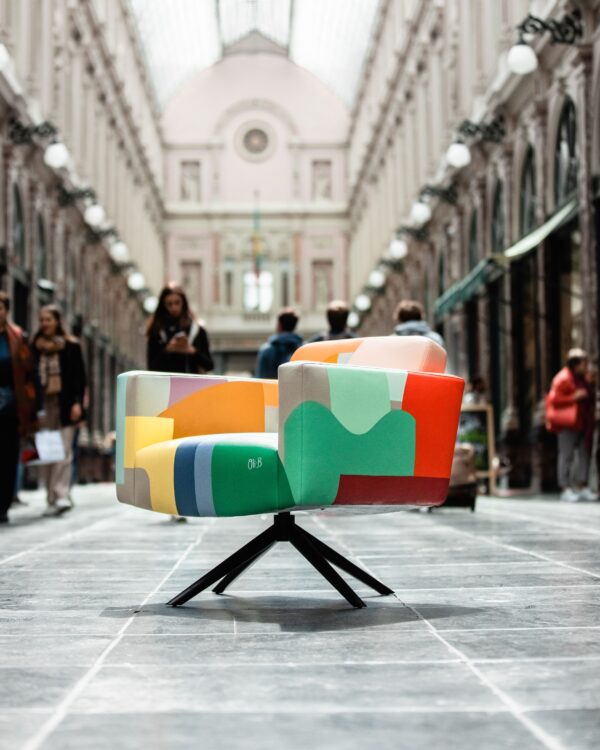You like art which grips you with its relevance and deep meaningfulness in today’s world? Then have a look at the exhibition “Us or Chaos” at BPS22, or the Musée d’Art of the province of Hainaut. Under this intriguing and bold banner “Us or Chaos”, the organization a/political presents its autumn collection, bringing the visitor to the jagged edge of the sharp and narrow frontier between order and disorder.
Text and pictures Hans Knol ten Bensel
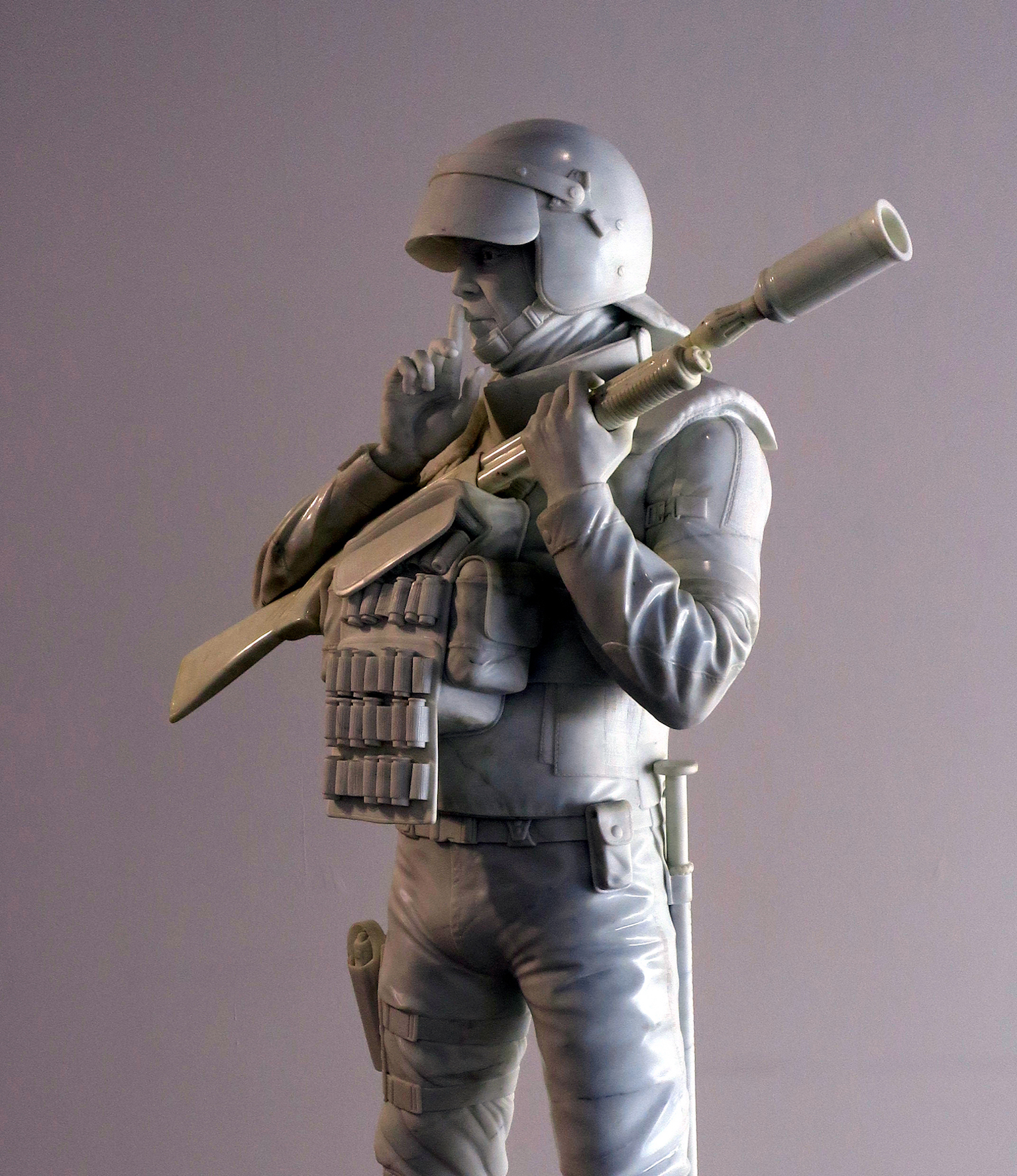
It’s either us or chaos: the ant-riot policeman warns, hand sculpted in carrara marble, showing us the difficult frontier between order and disorder…
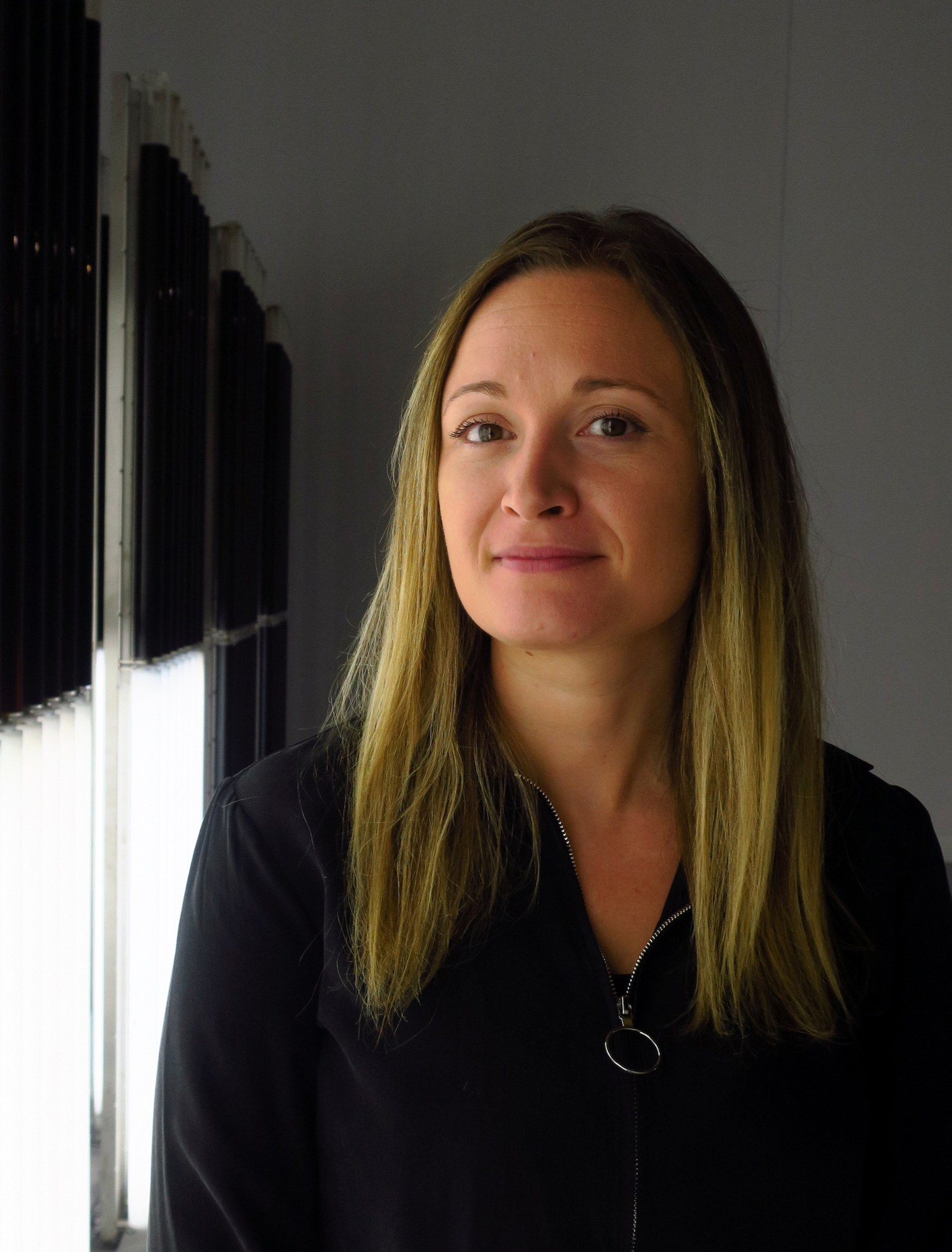
Inspiring and earth-moving: commissioner Becky Haghpanah-Shirwan, director of the a/political collection, led us through the exhibition of her art work selection under the theme “Us or Chaos”
First of all, let’s tell you a bit more about a/political: it is a not-for-profit arts organisation based in London, incorporating a permanent collection of socio-political art and is a collaborator and producer of large scale projects responding to contemporary politics. It therefore works together directly with artists on the realization of ambitious projects, initiating, producing and touring the projects world-wide. The organization provides a neutral space, where artists are encouraged to interrogate social and political concerns. With offices based in London, a/political opened The Foundry as an experimental space outside the controls of the contemporary art market. Located in the industrial of town of Maubourguet, west of Toulouse, a 3,500 square meters experimental space for production and exhibition.
Under the expert guidance of commissioner Becky Haghpanah-Shirwan, director of the a/political collection, we were led through the Us or Chaos exhibition. Her selection encompasses about forty art works of the collection of a/political. Monumental as well as minimalistic art creations, from the hands of Franko B, Erik Bulatov, Piotr Davydtchenko, Democracia, Kendell Geers, Leon Golub, Teresa Margolles, Andrei Molodkin, Petr Pavlensky, Andres Serrano, Nancy Spero.
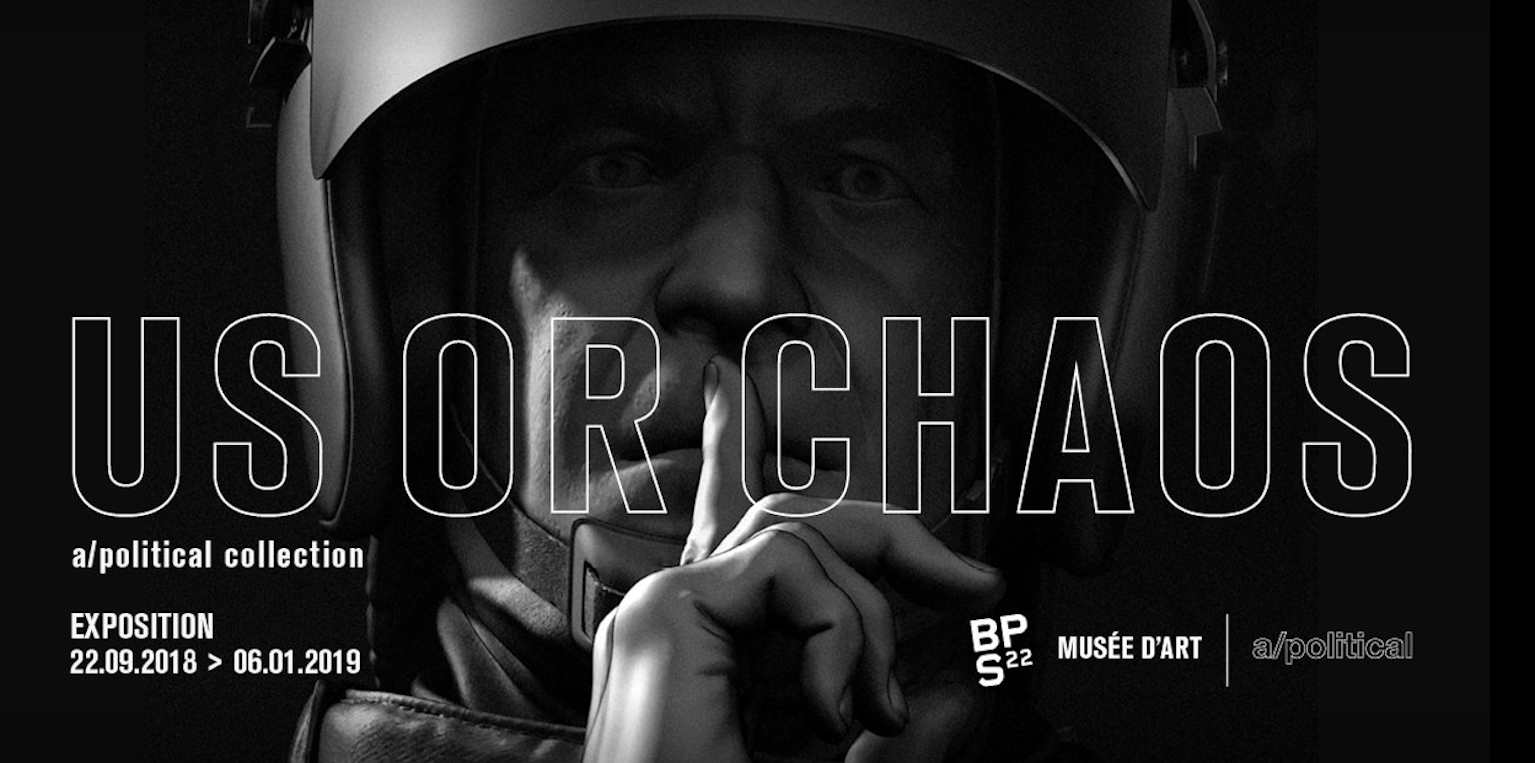
The title or motto of the exhibition “(either it’s) Us or Chaos!” is inspired by the retort an anti riot policeman shouted at a member of the Spanish art collective Democracia, and this exhibition unwraps to the visitor the techniques and methods of control or even intimidation (prosecution, emprisonment, etc) and the strategies of resistance, the movements going against the dominating and established social structures. The image, shot by Democracia, of an anti-riot policeman bringing his index to his mouth has been the hallmark poster of this exhibition.
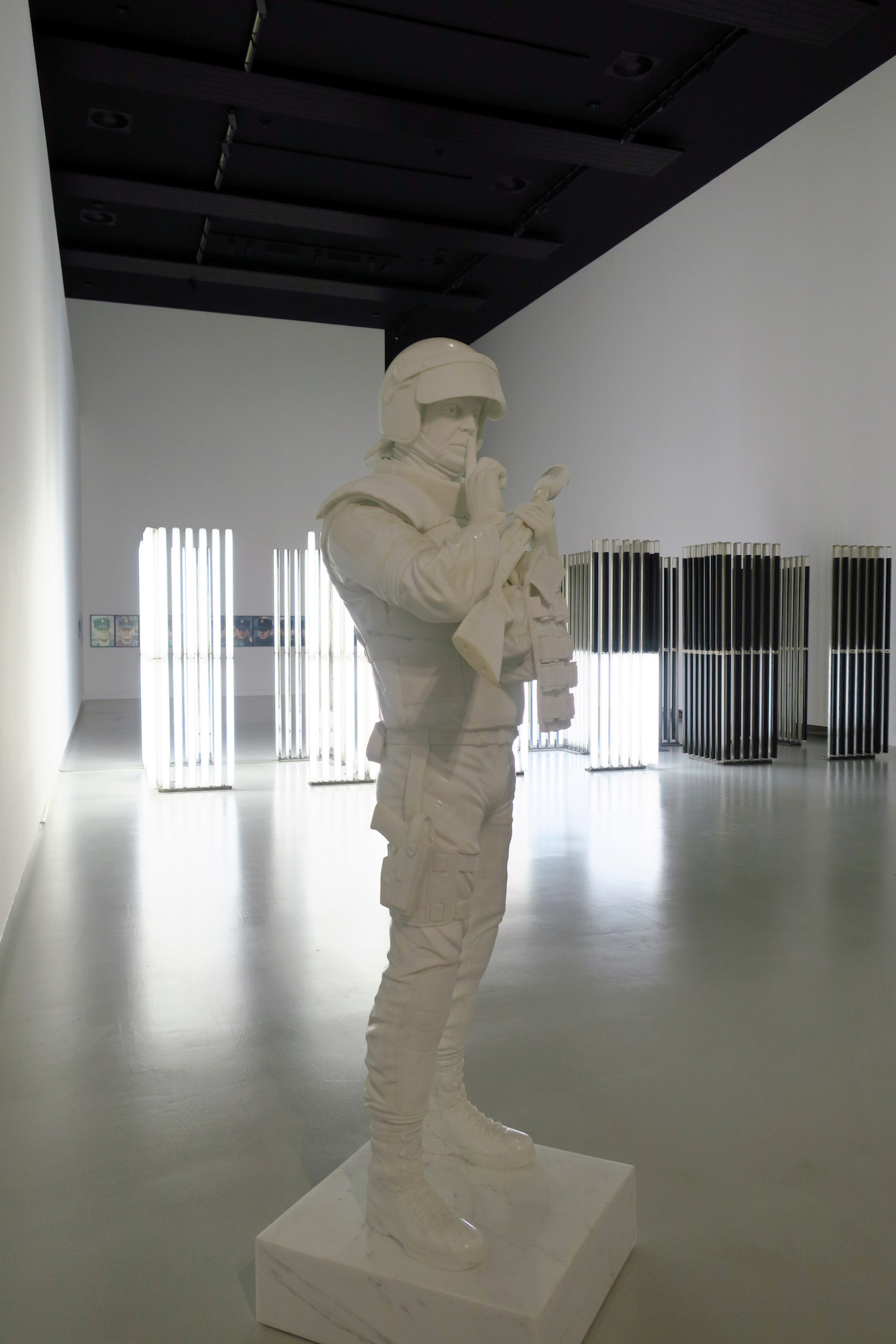
Commissioner Becky Hagpanah-Shirwan led us first to the Pierre Dupont Hall of the magnificent BPS22 museum building. Just at the entry of this hall stands the iconic carrara marble sculpture of the anti-riot policeman, sculpted by Democracia in 2016 and called “Working Class”, urging us with his index finger to hush. The room of the hall is blocked further by a vast installation of Andrei Molodkin, called “Transformer No.M208”, which obliges the visitor to make himself a way through the the big, tall square pillars made of glass tubes, which are alternatively filled with argon and neon lit or filled with Iranian crude oil.
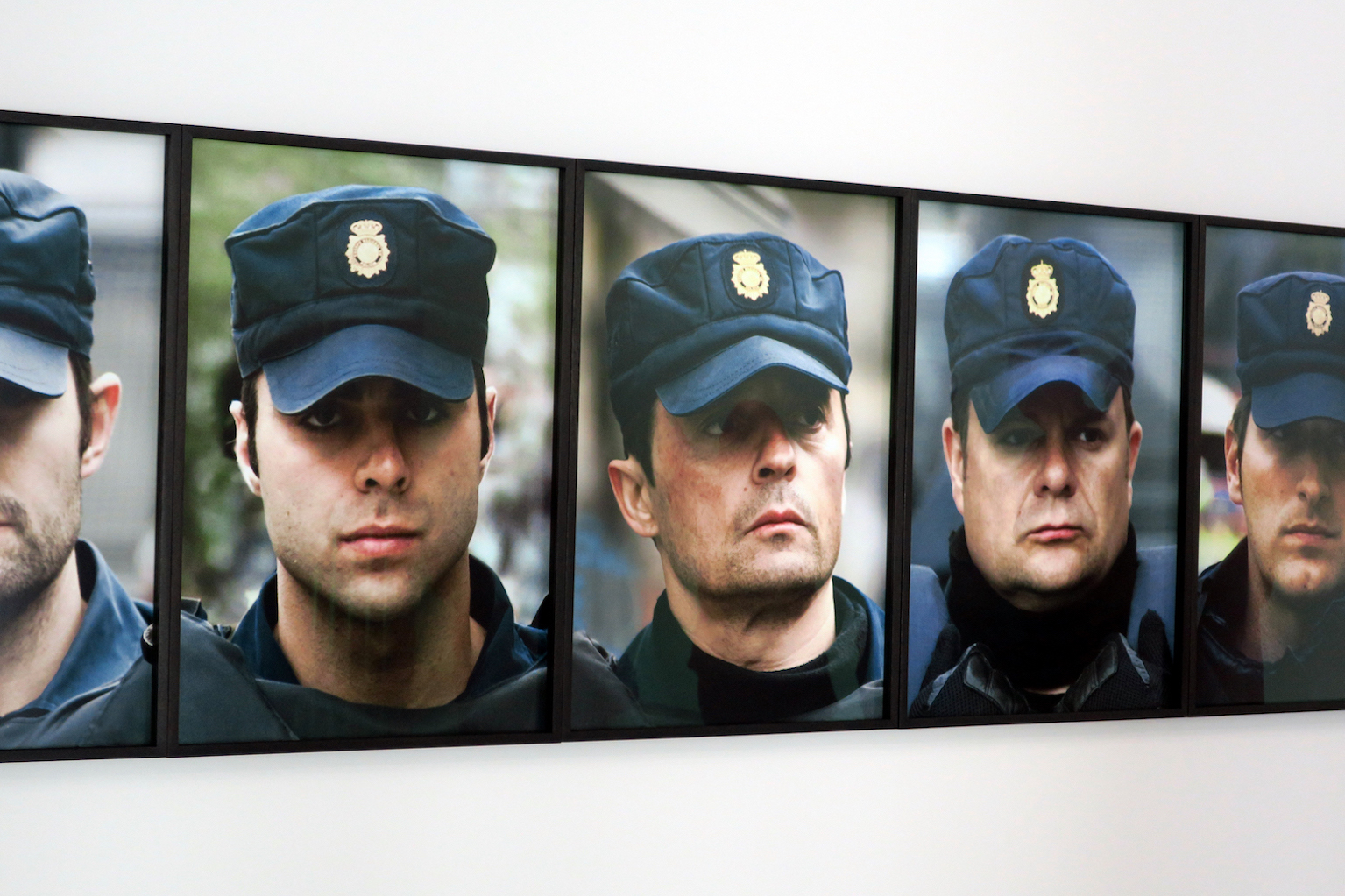
Behind this menacing (anti-riot) wall of tubular pillars, one faces a wide, wall covering series of 18 telephoto portraits of the helmet covered faces of Spanish anti-riot policemen. These portraits were shot by Democracia during the “Rodea el Congreso” in Madrid in December 2012. This initially cost Democracia a fine of 600.000 Euros and 3 years of imprisonment. After a lengthy trial, Democracia finally convinced the judges that their purposes were solely artistic, and that they wanted to present a more human face of the forces of law and order. Indirectly, Democracia has clearly shown how disproportional the intimidation of our democratic governments can be versus their citizens…
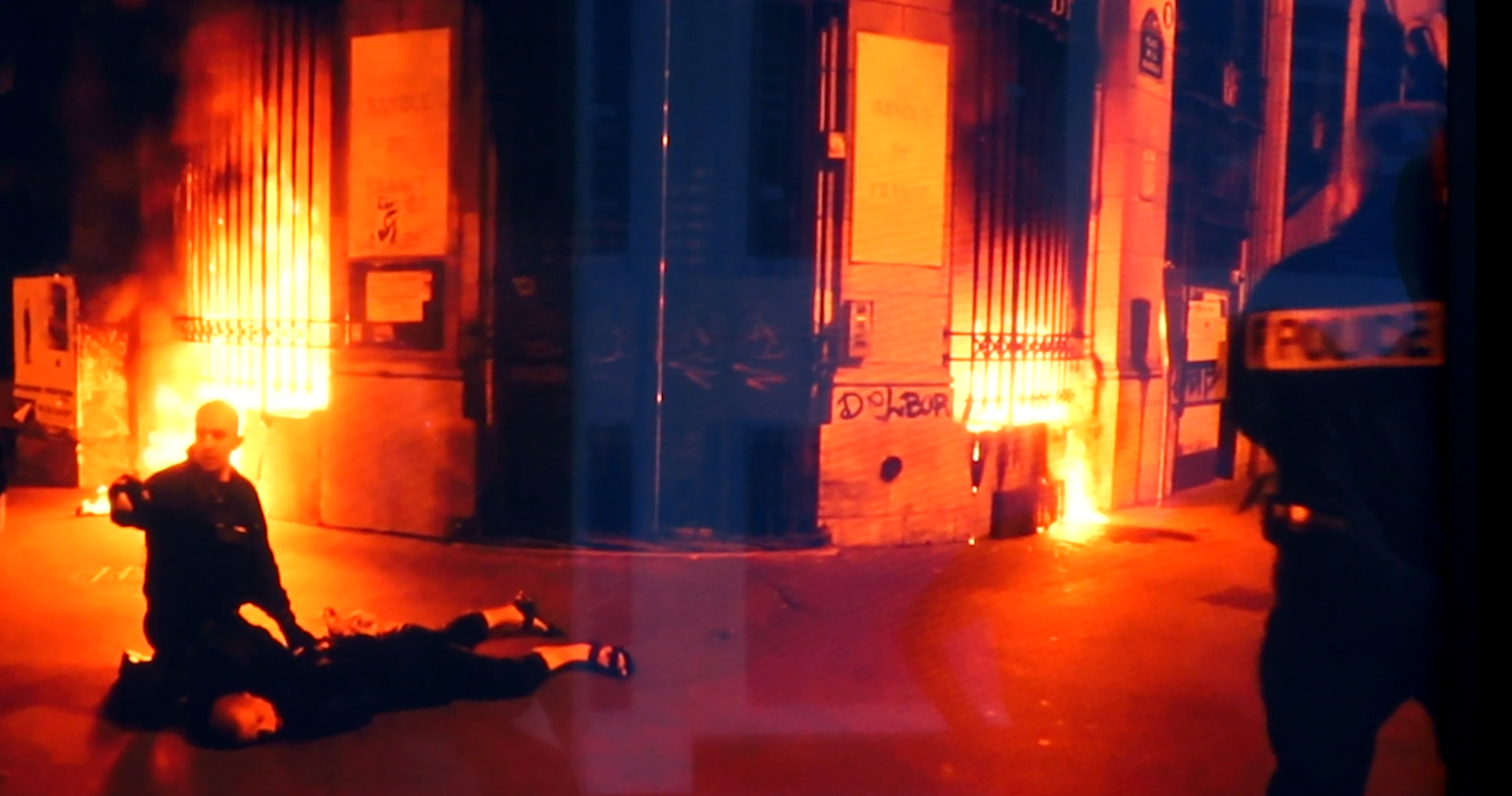
In the Big Hall of the museum the art works are arranged in landscape fashion, allowing the visitor to contemplate and study the exhibits at their leisure. Our eye is drawn to the video film installation of Petr Pavlensky, where he lit in the early morning of 16 october 2017 the windows of the Banque de France, which he initially soaked with petrol. He was cautious not to damage or endanger the building, and stood in front of the entrance between the two windows where the fires were blazing. Policemen were at the scene within less than a minute in post Bataclan Paris, and arrested him for violation of article 322-6 of the French penal code. Pavlensky stated “the Bastille was destroyed by the people in revolt, as a symbol of despotism and power. Now the Banque de France has taken the place of the Bastille”. For this action, he is at the moment of writing still held in the prison of Fleury-Mérogis… He shows all this in a video, which is displayed in the exhibition.
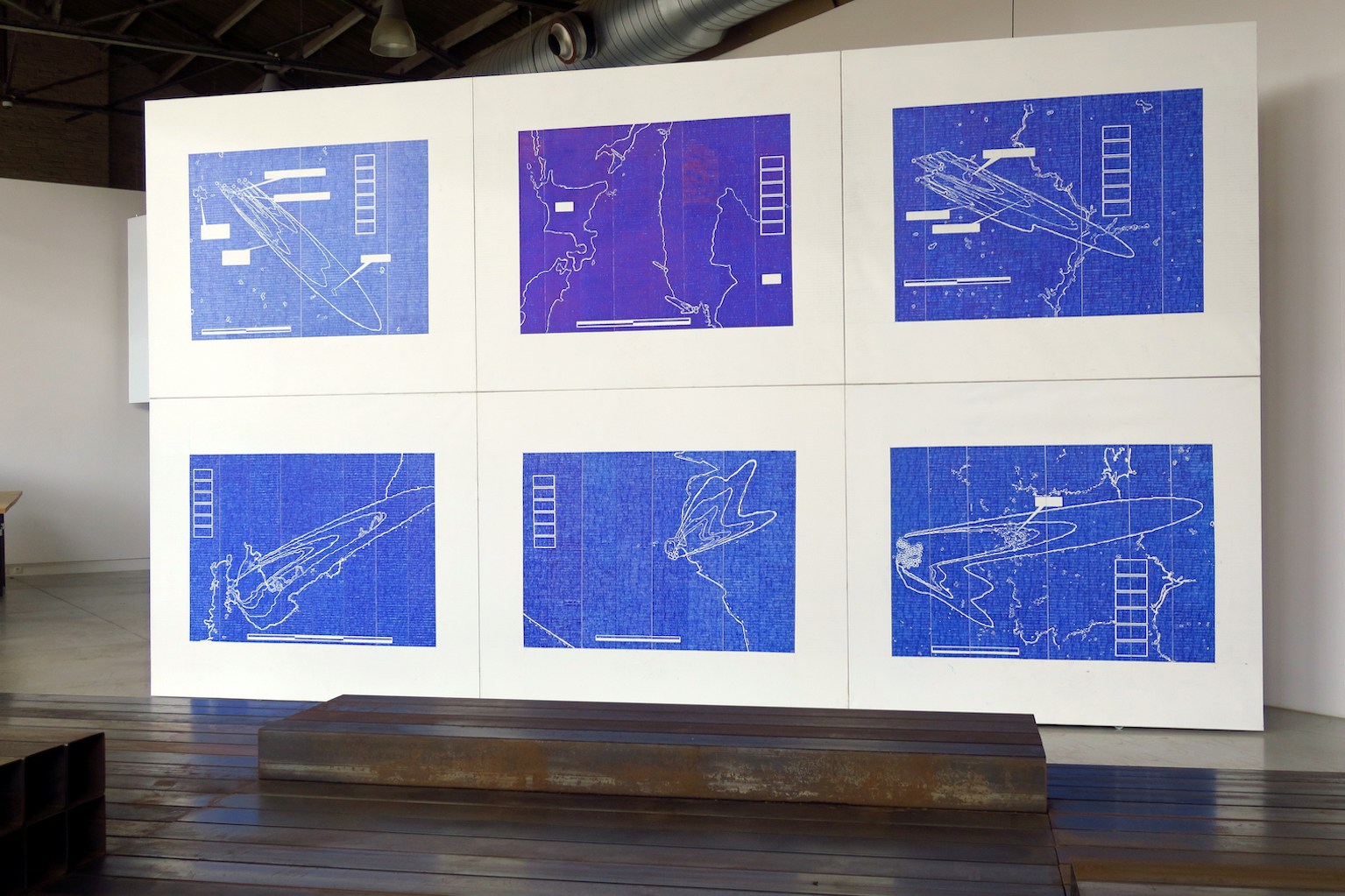
Gripping is also the work “Fallout Pattern” of Andrei Molodkin, which is a very large display – drawn with a ballpoint pen (!) – of maps taken from Wikileaks which show in detail the impact of an eventual American attack on Russia, the destruction as well as the radioactive fallout. This document, which was inadvertently leaked, triggered Russia to launch an aggressive rearmament programme.
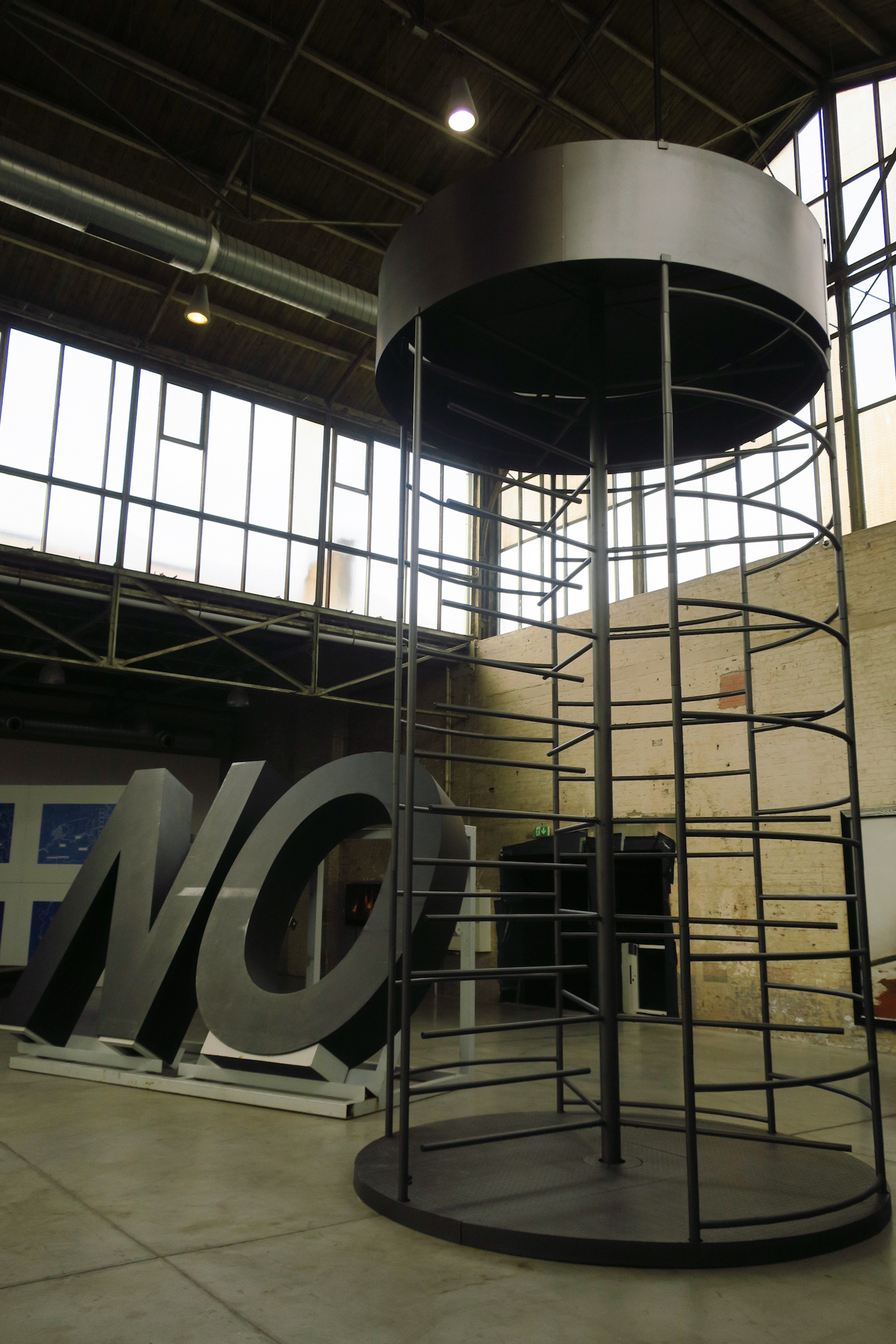
Tall in the room stood a large iron round sculpture, symbol of the entrance barriers at a (large) factory, this time superimposed and actually leading to nowhere. Ex-workers of Caterpillar under the inspiration and conduct of artists David Brognon and Stephanie Rollin made this tall work of art. It is called “résilients”, and is a symbolic protest to the closure of the Caterpillar factory in Gosselies, in Charleroi.
Next to it are the big letters “No”, made by Santiago Sierra in 2009. This 2,5 meter tall work of art takes of course a specific meaning wherever it is exposed.
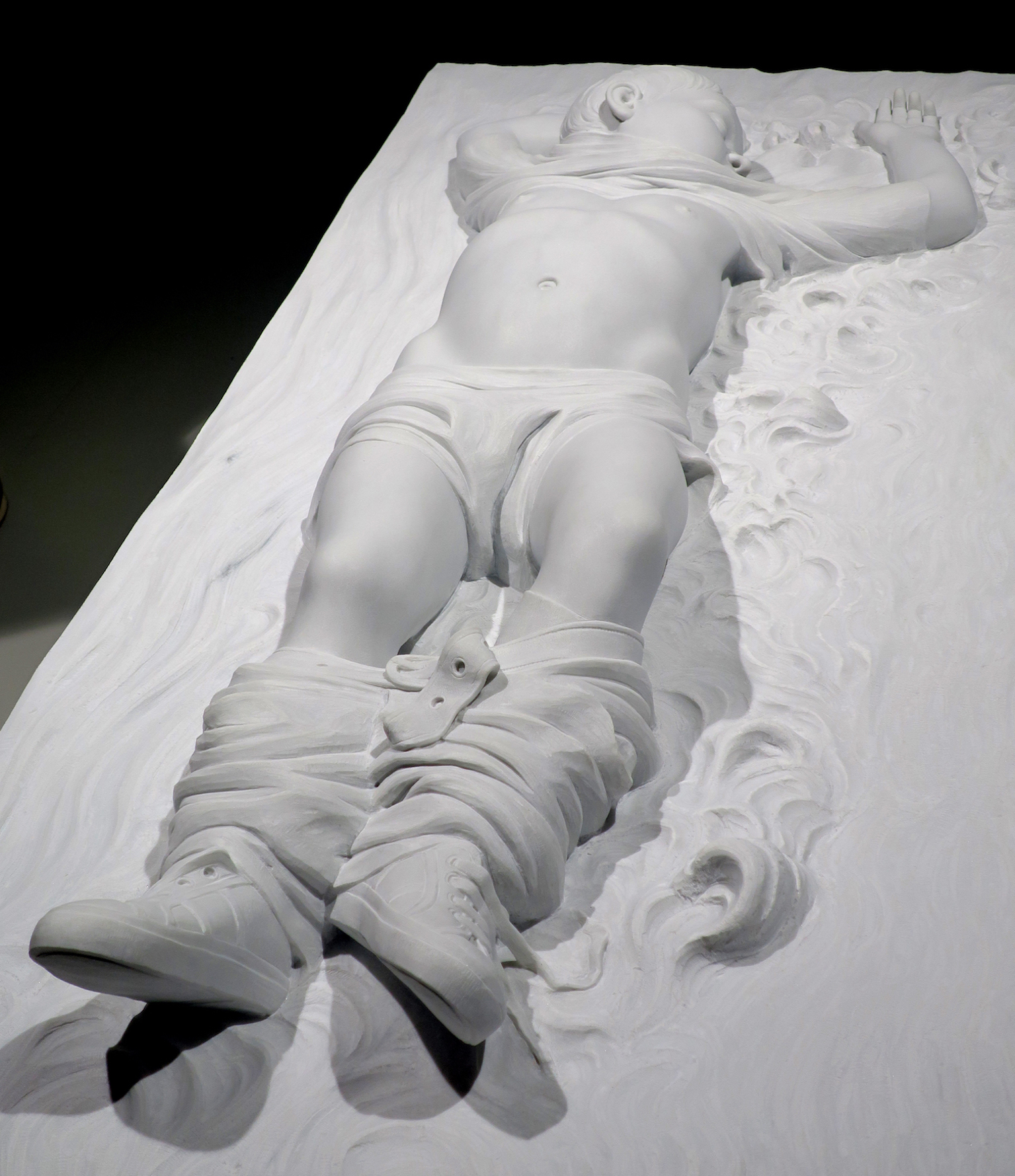
Poignant was also the sculpture in Carrere marble of a dead refugee child, made in 2016 by Franko B. It is hand sculptured by hand, in the style of the baroque sculpture artist Le Bernin (1598-1680). The sculpture is inspired by a photograph of the Syrian artist Khaled Barakeh.
A lot more is to be seen on this exhibition, so it’s a “must see” as far as we’re concerned… the exhibiton runs until January 6, 2019.
We also visited in Charleroi the Museum of Photography, with not less than three exhibitions. More on this soon…
Text and pictures Hans Knol ten Bensel
Practical info:
BPS22
Art Museum of the Province of Hainaut
Boulevard Solvay, 22
B-6000 Charleroi
The museum is open Tuesday to Sunday, 10.00>18.00
Closed 24/12, 25/12, 31/12, 01/01.
Entrance 6 €, Groups (Min 10 persons) 4 €.
